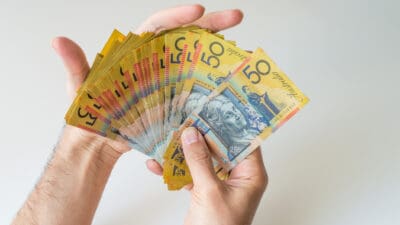There is a broad range of ASX dividend shares for investors to consider. The question is: Are those high-yield ASX dividends a mirage? Can the payments continue?
Firstly, it's important to remember that dividends are not guaranteed. Companies may reduce or completely cut their dividend payments.
Let's first consider how large dividend yields can occur.
What makes a high dividend yield?
Three main factors could lead to a big yield, in my opinion.
First, a low price/earnings (p/e) ratio can lead to a higher dividend yield.
For example, imagine a business makes $100 million in profit and has a market capitalisation of $1 billion. The p/e ratio is 10 – the market cap is 10x the earnings. If it paid out $50 million as a dividend, that's a dividend yield of 5% with a dividend payout ratio of 50%. If franking credits were involved and the dividend was fully franked, the grossed-up dividend yield would be 7.1%.
Secondly, the business could have a high dividend payout ratio.
Now, let's say a business makes $100 million in profit, but has a market cap of $1.5 billion. In this case, the p/e ratio is 15. This business is priced noticeably higher than the first example. But, if it paid out $80 million of its net profit, the dividend payout ratio would be 80%, and the dividend yield 5.3%. It's a 7.6% grossed-up dividend yield, including franking credits.
The third factor is that last year's dividend could be a lot bigger than what the market is expecting this year's dividend to be.
This could be because the company paid a one-off special dividend last year or business profitability has significantly reduced since then. Or perhaps the business just wants to hold onto its cash.
Are high-yield ASX dividend shares safe?
I think it depends on each business.
There are plenty of examples of special dividends that are unlikely to be repeated again and again. For example, a business may have sold off a division and sent the sale proceeds to shareholders. It can't sell the same business segment again.
A business that is going through pain may cut its dividend. For example, Magellan Financial Group Ltd (ASX: MFG) paid a total dividend of $1.79 per share in FY22, a trailing 19.5% dividend yield. But, Commsec numbers suggest Magellan could pay an annual dividend per share of 87 cents per share in FY23 and 68 cents per share in FY24, which is a yield of 9.5% and 7.4%, respectively.
Resource companies and retailers often have quite a low p/e ratio.
But, resource companies such as miners heavily depend on what happens with the commodity price. They will probably see both boom times and weaker times, so I wouldn't call them 'safe', but they can be rewarding.
Retails can also see cyclical earnings as households go through cycles, so the dividend may go up and down as well.
Businesses with low p/e ratios may not necessarily offer safe dividends. If business earnings are not consistent or defensive, then the dividend may well be volatile as well.
Companies with high dividend payout ratios may well be able to pay consistent dividends if their actual earnings are also consistent. Businesses that operate in defensive sectors, such as APA Group (ASX: APA), Sonic Healthcare Ltd (ASX: SHL), Metcash Limited (ASX: MTS) and Propel Funeral Partners Ltd (ASX: PFP) may be able to keep paying resilient dividends.
Foolish takeaway
So, high dividend yields may or may not be safer than lower yields – it depends on the company, the industry they come from and how resilient the underlying earnings are.
I wouldn't count on resource companies paying reliable dividends year after year, but some businesses with a high dividend payout ratio could be candidates to consider.









